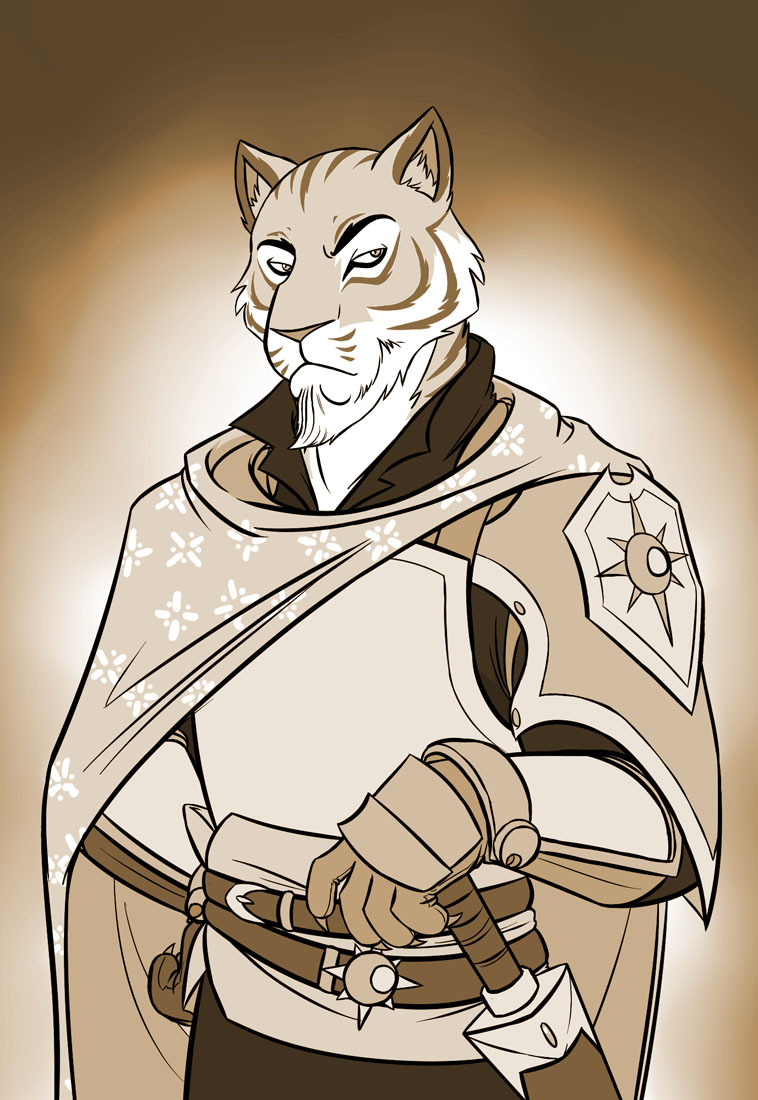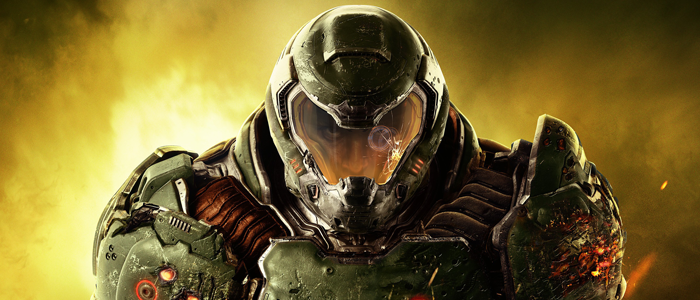Weapons, Species, Feats, Oh My!
Introduction
This installment of the Rakshasa in Space! is all about the player facing material that would possibly be in an Alien Archive entry. Typically there is a weapon option, a playable race option, and a spell or feat that ties itself into the alien’s entry. Since I did not have the page limit or spread limit the Alien Archives do, I went ahead and did all three of those options below! Not only did I put those together, but I tried my best to walk through my thought process as I designed them. Previously, it was pretty easy to lay out my thought process because I was following the step-by-step process of creating an adversarial alien written up by Paizo. While there is no written process for these things, many of them do follow some underwritten rules and norms that I try my best to follow. I hope that you take a look at them and maybe get some use out of them or my thoughts!
Designing the Urumi:
After looking at the Urumi in Pathfinder 1st Edition, I searched Archives of Nethys – Starfinder to see if there was anything similar enough in properties to just use for the Zalyakavat Rakashsa. I quickly discovered that the ‘distracting’ property did not exist in Starfinder, but the ‘feint’ property did! The next step was to see which advanced melee weapons had that property. The only one I could find at the time of design was the Mirage Dagger line. On one hand, this weapon was sort of what I was looking for, but I was wanting something that was purely kinetic (most likely slashing) and I was debating on if I wanted the item to have the operative property. It was time to refer back to the Zalyakavat in Pathfinder 1st Edition, it looks like that while Dexterity was its highest stat, it did not attack with Weapon Finesse, because the original Urumi was not a light weapon, but a regular one-handed slashing weapon (interestingly enough it could be a neat weapon for a Swashbuckler!). This leads me right away to remove any thoughts of adding the operative property.
The next big step then, knowing that I wanted it to probably be Analog with 1 special property (Feint), it was time to compare damages for the levels I wanted the Urumi series to sit at. My ‘center piece’ was going to be the urumi that the Zalyakavat would be wielding at CR 13, so I knew I wanted the item to be either 13th/14th. (Note: The Zalyakvavat’s damage would not be based off of this damage, but I wanted it to be close-ish.)
Here is what some of the Level 13 Advanced Melee Weapons that dealt any Kinetic damage did:
4d10 Pure Kinetic (analog, no special properties)
6d6 Partial Kinetic (powered, no other properties)
Unfortunately, there were no kinetic Advanced Melee Weapons at level 13 that had a special property, but at Level 14 there was, the Natural Hardlight Hand Wrap having two properties (one pretty substantial in Force). But this does give me an idea that I might be able to get away with 1 level lower damage, and get a special property. It would take a little more digging on my part to see if these held true for other weapons. After some searching though, I wasn’t able to definitively come to a conclusion, so I’m going to take a slightly different approach.
It looks like a few of the weapons that do partial kinetic attacks all do 6d6 points of damage at 13th level. I’m going to follow that trend essentially and say that at 13th level the Zero-Edge Urumi will deal 6d6 Slashing, is analog, and has feint property, and a Bleed 2d8 critical effect.
To figure out the rest of the Urumi damages and levels, I can work with the same damage that some of the other partial kinetic weapons are doing at various levels. One of the ones that I am basing my math is the Wailing Blade series of weapons. For the critical effect, I compared the damage to various other bleed weapons at those levels. The only one that did not have a contemporary at level 8 is the Sintered Urumi. There were weapons with the critical bleed effect at levels 7 & 9, so I took the middle road of 1d8 and 2d6 and chose 1d10 for the amount of critical bleed damage at 8th level.
For pricing, there might be an underlying formula that Paizo uses for weapons, but off hand it appears based on flexibility of the weapon and the level provides a ballpark of where the price should be.
After all of that research, I present to you the Urumi line of weapons!
URUMI (ONE-HANDED ADVANCED MELEE WEAPONS)
| Name | Level | Price | Damage | Critical | Bulk | Special |
| Urumi, Standard | 3 | 1,350 | 1d6 S | Bleed 1d4 | 1 | Analog, feint |
| Urumi, Sintered | 8 | 10,750 | 2d8 S | Bleed 1d10 | 1 | Analog, feint |
| Urumi, Zero-Edge | 13 | 52,000 | 6d6 S | Bleed 2d8 | 1 | Analog, feint |
| Urumi, Molecular Rift | 18 | 369,300 | 15d6 S | Bleed 6d6 | 1 | Analog, feint |
Playable Race/Ancestry
One of the points of today’s blog is to showcase using different aspects of the Starfinder system beyond converting Pathfinder 1st Edition monsters into Starfinder aliens. One of the things that I love about Starfinder is how quickly Paizo has embraced the Star Wars ‘cantina’ effect. In that same vein, I really wanted to make a playable Rakshasa related species.
In Pathfinder 1st Edition, this was achieved through a Tiefling variant, the Rakshasa-Spawn (Beastbrood). In Starfinder, Paizo handled all of the planar born aliens as Planar Scions. The seven current Planar Scion playable species are: Aasimar, Ifrit, Oread, Suli, Sylph, Tiefling, and Undine. I believe I might name this Rakshasa-Spawn in Starfinder, Beastbrood.
With the release of Combat Operations Manual and Near Space we have a wealth of examples of alternate racial traits, so I could consider just making some alternate traits for a Tiefling. I believe though that those alternate racial traits are more appropriate for aliens with large and diverse populations (think aliens that have large enough populations to populate at least a planet and many colonies). The Beastbrood might have congregated to create communities, however more than a handful of those feels inappropriate. So with that in mind, I’ll move forward with an entire playable species layout.
Once I noticed that the Starfinder Tiefling would not fit my vision, I quickly compared the base Pathfinder 1st Edition Tiefling to the Starfinder Tiefling. They have the same ability adjustments, same skill bonuses, and elemental resistances. The ‘biggest’ difference is that instead of the Spell-like Ability of the Pathfinder 1st Edition Tiefling was replaced with a similar ability in Fiendish Gloom. I believe this is because the darkness spell does not currently exist in Paizo’s Starfinder products.
Now, I needed to look at the Pathfinder 1st Edition Beastbrood. It was getting pretty standard ability adjustments for Pathfinder & Starfinder, so there was no need to change those. They got two +2 bonuses to two skills, which is also pretty common in Starfinder species, so I will be keeping those. While the Tiefling in Starfinder does not have a Spell-like Ability, many of the other Planar Sciones do have one, so I am comfortable giving the Beastbrood detect thoughts 1/day just as they have in Pathfinder.
It may look like I am done, however all of the other Planar Scions have some variety of elemental resistances. One of the first things I thought about though, is that none of my converted Rakshasa have elemental resistances naturally, so it would be inappropriate to grant the Beastbrood resistances. I began to look at all of my conversions to see if there was anything that all of them had that I could turn into a playable feature. One was Damage Reduction, which did not feel appropriate for a playable race. The next was a light bulb in my head, and I knew I needed to make it happen. I needed to give the Beastbrood the ability to change their shape.
I rarely choose the easy route first, and I began looking at possibly utilizing the polymorph spells in the same manner that the Sylph utilizes the flight spell. It was looking like that would be balanced, but all of the non-humanoid shape shifting did not feel right for me since regular Rakshasa can only change shape to humanoids. Once I wrote the need to restrict it to humanoids, I realized that there was a better option. The handful of playable species that have some form of shape shifting!
The three that I took a look at were the Astrazoan, Endiffian and the Reptoid. At first, I had only looked at the Astrazoan and the Reptoid. Comparing just those two, I did not like the fact the Astrazoan did not limit it to humanoids, but I also did not like the time limit of the Reptoid. Even if I could make the Reptoid’s time-limit work in the lore of the Beastbrood, it did not set well with me. Thankfully, I remember the Endiffian, and I took a look at their ability. It happens to be a great in-the-middle of the Astrazoan and Reptoid ability. The Endiffian’s is a little more restrictive than I’d like, in the limb requirements, but between the Astrazoan ability and the Endiffian ability, I am comfortable writing up a similar ability. (It is interesting that there are 3 different ways currently published for playable species to shape change, and possibly confusing for GMs & Players of those species!)
With all of that though, I’d like to present to you all the Beastbrood:
Beastbrood
Beastbrood are descendants of species and creatures from the Material Plane that have strong connections to reincarnated beings of avarice and violence. They can arise in areas that have been decimated by the destruction wrought by unchecked greed and bloodshed. Though beastbrood can pass for other kinds of humanoids, their natural forms tend to have muted animalistic heads, and a digit or two on their hands may have joints that bend in a direction not common with the original species.
Ability Modifiers +2 Dex, +2 Cha, -2 Wis
Hit Points 4
Size and Type
Beastbrood are Medium Outsiders with the native and shapechanger subtypes.
Change Shape
As a full round action, a beastbrood can physically alter their form to look like any Medium creature, as long as they have seen a similar creature before. They can attempt to either mimic a specific creature or look like a general creature of the chosen species. The beastbrood gains a +10 bonus to Disguise checks to appear as a creature of the subtype of the new form. The DC of the beastbrood’s Disguise check is not modified as a result of altering major features. The beastbrood can remain in an alternate form indefinitely (or until they take another form)
Darkvision
Beastbrood have darkvision with a range of 60 feet.
Skilled
Beastbrood gain a +2 racial bonus to Disguise and Sense Motive Checks
Spell-like Ability
Once per day, a beastbrood can cast detect thoughts as a spell-like ability. At 8th level, she can use this ability one additional time per day, and she gains a third use per day at 16th level. Her caster level equals her level, and the save DC is equal to 11 + her Charisma modifier.
Creating a Feat
I also want to create a feat that goes with my Rakshasa entries as well. At first I kind of wanted to create something that a Beastbrood could utilize, but I decided that instead, I wanted to create a feat that could be useful against not just Rakshasa but the myriad of other aliens out there that can detect your thoughts! It also dove-tails nicely into possible usage during the current Adventure Path, the Threefold Conspiracy. Although, I will admit while making this feat, I am hoping that it isn’t summarily overwritten by something Paizo releases as player-facing material in the AP.
Anyway, it might be prudent for player characters to keep their personal information to themselves, and be able to block spells such as detect thoughts. I did not want a feat that granted outright immunity to spells such as detect thoughts, but I wanted increased resistance beyond what Iron Will gives. I also may include a line that it does not stack with Iron Will to prevent overly large bonuses.
Off-hand I want to just give a slightly larger bonus to Will saving throws than Iron Will, but more situational, and I also want to provide some other benefit to make it a little different as well to make it worthwhile and memorable. While detect thoughts is a divination(mind-affecting) spell, there are a few other divination spells, such as discern lies that I feel could fall into a similar category. Since there are not many divination spells that have saving throws, giving a larger bonus to just those spells may be appropriate.
Mind Palace
You have trained your mind to be difficult to read and detect.
Prerequisites: Mysticism 5 Ranks
Benefit: You gain a +4 bonus to Will saving throws versus divination effects.
Additionally, if an ally within 30 feet from you must make a saving throw against the same effect, and you have saved against it, as a reaction, you may grant your ally a +1 bonus to their Will saving throw against the effect.
Additional: These bonuses do not stack with Iron Will
Mind Palace, Improved
You have created an ever-changing landscape in your mind.
Prerequisites: Mind Palace, Mysticism 9 Ranks
Benefit: You can spend 1 RP to re-roll a failed Will save versus a divination effect.
Additionally, if an ally within 30 feet from you fails to make a saving throw against the same effect, and you have saved against it, and if you spent your reaction to grant them a +1 bonus, you may spend 2 RP to grant them a re-roll against the effect with the same +1 bonus you granted previously.
Additional: This ability does not grant an additional re-roll if Improved Iron Will was used.
Final Thoughts
Creating all of this additional content really let me think about how I wanted the Rakshasa to fit into a Starfinder-esque setting. Previously, what I had done was mostly mechanical with little to no actual changes to the Rakshasa lore. With the Beastbrood & Mind Palace feats specifically, it made me think beyond just the statistics and at least venture a little bit into how Rakshasa interact with the world around them!
This is the end of my Rakshasa in Space! Series, but probably not the end of me using the Rakshasa as a springboard! My next series on Something Creates will be walking all of you through my process of creating a Society-style quest pack, from outline to completion!






Leave a Reply